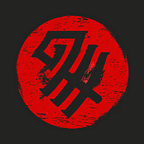History Of NFT’s
Stumbling Upon the Word NFTs
We first heard the term “NFTs” from a friend late last year. We were on a Watsapp call when he told us that he looked to purchase one the next day. We asked for further clarifications on what the term meant and he responded thus: “My dear, you may not fully grasp the entire concept now, but I’ll break it down for you. I’m busy at the moment, so buzz me later tonight on a call and I’ll explain better.”
The conversation ended there but we were curious to know about NFTs so we went online to read up on them before the call later in the evening.
Making Sense of the Whole Thing …
NFTs — Non Fungible Tokens. Leaving it just like that, it means nothing to a layman. So, I’ll explain.
A token on the blockchain is a digital representation of assets or a store of value. NFTs are tokens built on the blockchain. In other words, NFTs are digital assets that reside on the blockchain.
What then makes NFTs so special? I’ll say the fact that they’re non-fungible.
The Oxford dictionary defines fungible as “replaceable by another identical item; mutually interchangeable.” A dollar bill in your pocket holds the exact same value as a dollar bill in your friend’s pocket. You both could swap your one-dollar bill and it doesn’t change a thing. It remains one dollar. Simple as that.
Non-fungible of course would be the opposite of fungible.
NFTs are non-fungible tokens. This means they can’t be replaced by another NFT even if they are identical. Each NFT is unique and holds a different value from the next NFT.
Now, to the history of NFTs.
The History of Non-Fungible Tokens
Non-fungible tokens as I earlier introduced are digital assets that reside on the blockchain. Below, we’ve detailed the timeline of events in the history of NFTs.
2012–2013: Colored Coin
Initially issued in a paper by Meni Rosenfield in 2012, the idea of NFTs emerged from what is called a “colored coin”. The idea of Colored Coin was to use the Bitcoin blockchain for assets like digital collectables, coupons, property, company shares, and more. They were described as new technology and gave raw possibilities for the future prospects of utilisation.
2014–2016: Counterparty
The Counterparty platform (Bitcoin 2.0) was established in the year 2014 by Robert Dermody, Adam Krellenstein, and Evan Wagner. Counterparty was created as a peer-to-peer financial platform and distributed, open-source internet protocol on the Bitcoin blockchain.
Counterparty allowed asset creation and a decentralized exchange, thus allowing users to create their own tradable currencies or assets. Later on, in 2016, meme trading became the trend and thus gave rise to the release of the Rare Pepes NFTs on the Counterparty platform.
2017–2020: Cryptopunks/Cryptokitties/Decentraland
The year 2017–2020 can be termed the era when NFTs went mainstream. Following the popularity of the Rare Pepes, two software developers; John Watkinson and Matt Hall created a set of 10,000 unique NFTs on the Ethereum blockchain which they branded as CryptoPunks.
At first, the CryptoPunks NFTs could be claimed for free by anybody with an Ethereum wallet, but all 10,000 were quickly claimed. Now they must be purchased from someone via the marketplace that’s also embedded in the blockchain.
Not so long after, Cryptokitties came into the picture. Cryptokitties NFT was introduced by a Vancouver-based venture studio named Axiom Zen and very quickly went viral, earning funding from top investors due to their rise in users.
The success of Cryptokitties brought more NFT gaming and metaverse projects to the limelight with Decentraland a VR platform on the Ethereum blockchain being the first of its kind to break ground.
In decentraland, you as a player can explore, play games, build, collect items and more, and everything that you find, earn and build there, you own on the blockchain.
2021: NFT Goes Viral
The year 2021 on the blockchain is called “The Year of The NFT” for a reason. This is so because it was the year that saw the greatest surge in the demand and supply of NFTs. It seemed everyone on the blockchain wanted a piece of the pie. The big fishes of various industries wanted in as well.
Prestigious auction houses; Christie’s and Sotheby’s namely, not only took their auctions into the online world but also began selling NFT art.
Jack Dorsey, co-founder, and CEO of Twitter also put up his first tweet “just setting up my twttr,” for sale via a platform called Valuables. This NFT sold for the sum of $2.9 million. Such a huge sale among many others gave the NFT marketplace a significant validation.
And this is just the beginning. One can only imagine what the NFT marketplace would become decades from now.
Blog By — Udeze Precious — Content Council Member — Tanukiverse
Join our community to learn, earn and have fun!! — CLICK HERE
